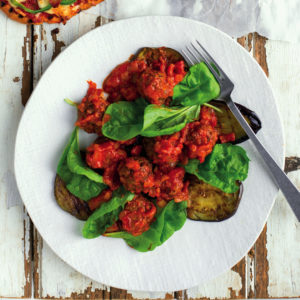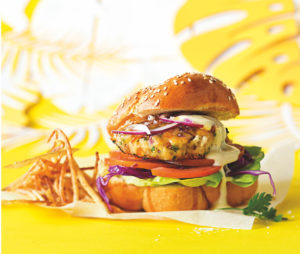Food symbolises more than just our palettes: it represents centuries of love, struggle and stories. Saba uses her cookbook Tekebash & Saba as a way to do just that – exploring her Ethiopian heritage one recipe at a time.
Saba Alemayoh’s 2023 recipe book Tekebash & Saba is a comprehensive timeline detailing the raw existence lived by her mother Tekebash and the people of Tigray; one of the nine states that makes up Ethiopia. What was once home for young Tekebash soon became haunted by 17 years of civil war. The effects of this, combined with the current restrictions to supplies, food and produce to the Tigrayan people imposed by the Ethiopian Federal Government resulted in what Saba calls a man-made famine that still rages on today. Along with the hardship that comes with constant fear, everchanging living situations and fighting for survival, there is still somehow space for stories of love and learning. We see that a people’s innate sense of belonging, no matter how far away in location or memory, can never be erased.
Tekebash & Saba is a story about life, customs and the flavours that symbolise home. “Centering this book around Tigray food and cultural history is, in itself, a revolutionary act in honour of the strong lineage we come from,” says Saba. “The absence of politics in one’s life – even in something as simple as culinary culture – is a privilege not afforded to all.”
More than just a cookbook, Saba has crafted an intricate painting of not only her family’s life, but also the life shared by generations of Tigrayan people. In conjunction with togetherness, the mother-daughter duo have lovingly put this book together to further seal the immortality of the roots, culture and heritage behind Tigran life.
Foundation Flavours
When it comes to understanding the fundamentals of Tigray cuisine, all Western food rules need to be left behind. Tigray cuisine focuses on the communal involvement of food preparation and enjoyment, with all dishes served together on one large, fermented pancake-like flatbread called injera. Injera is eaten with every meal, and is used as a utensil as well as “bread” to scoop up morsels of food.
Injera, along with Tesmi (a spiced butter) and Berbere (a complex chilli powder) or Dilik (a chilli paste) are the three main components that make up Tigrayan cuisine. The rest of the food is an amalgamation of flavours brought together by centuries of African and Western religion, as well as produce availability, crop reliability and familial tradition. As most Tigrayans follow Orthodox Christian values, two thirds of the year is spent consuming a vegan diet, with the remaining months focusing strictly on meat.
Tekebash & Saba provides a window into an ancient culture, one that celebrates earthy ingredients and utilises freshness, natural flavour and wholefood nutrition. Plant-based living is the way of life and not a novelty; every day ingredients are used to create realistic and nutritious meals. This cookbook tugs at the heartstrings and takes our hand, popping our little life bubble and encouraging us to peek into a world other than our own.
Salata aswad
Serves 4
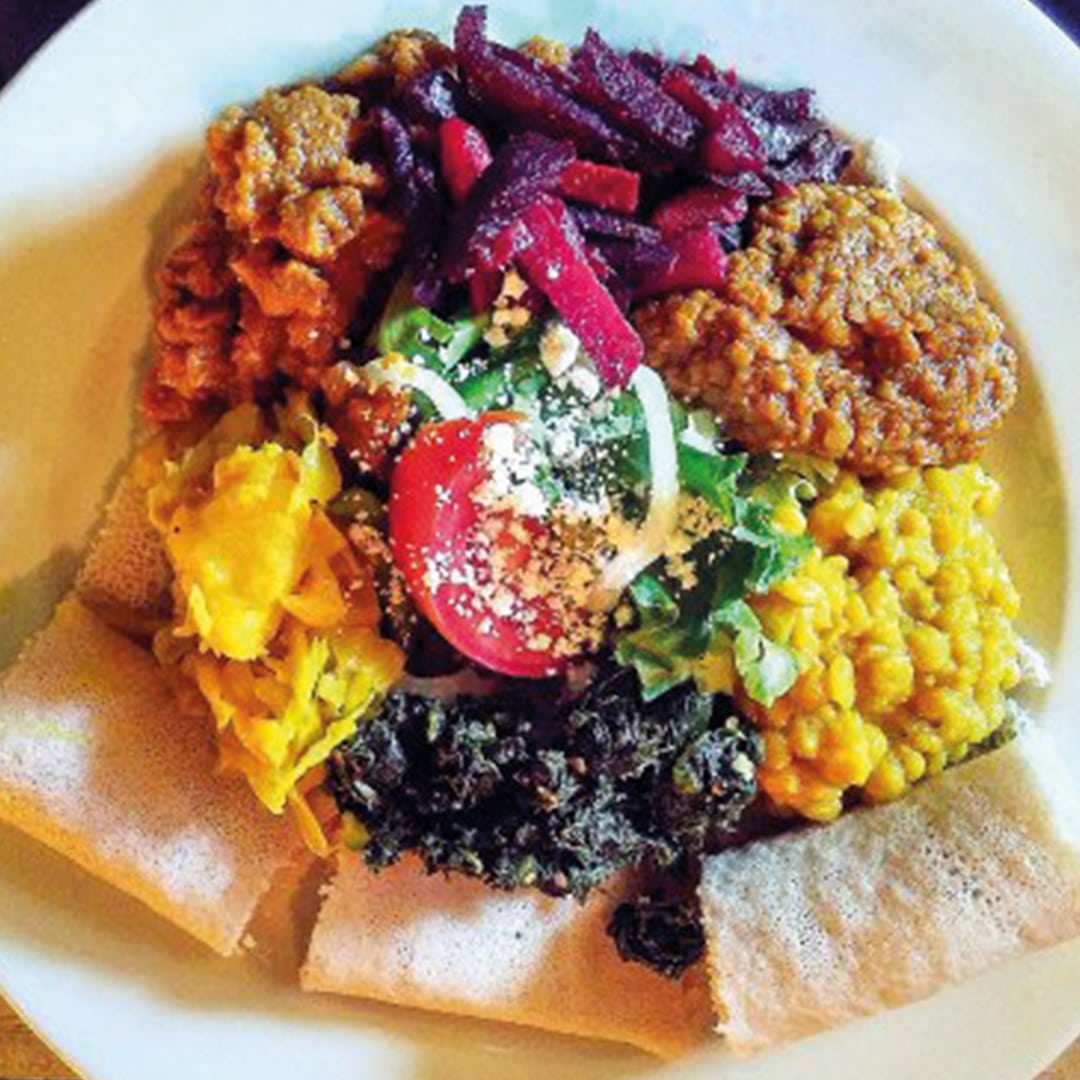
This is a chunky eggplant dip that we usually would eat as a sandwich filling in Sudan. My mum used to give me this for school lunches.
Ingredients
2 eggplants
Sunflower or canola oil, for frying
½ cup (130g) yoghurt
2 Tbsp peanut butter
1 Tbsp olive oil, plus extra for drizzling
1 clove garlic, minced
½ tsp salt
1 green pepper, deseeded and finely diced
1 tomato, finely diced
Juice of 1 lemon
Gluten-free flatbread, to serve
Method
- Peel and dice the eggplants into 1–2cm pieces.
- Heat some oil in a pan over medium–high heat and add the diced eggplant.
- Cook, stirring the eggplant occasionally, for about 15 minutes until it softens. Set aside.
- Mix together the yoghurt, peanut butter, olive oil, garlic and salt, until it’s the consistency of mayonnaise. Set aside.
- While it’s lukewarm, put the eggplant in a food processor and blend until it is the consistency of lumpy mashed potato.
- Add the yoghurt mixture and fold it through the eggplant mixture. Gently stir in the green pepper, tomato and lemon juice.
- Spread this on a toasted flatbread and drizzle with olive oil.
S’ Nigh
Serves 4
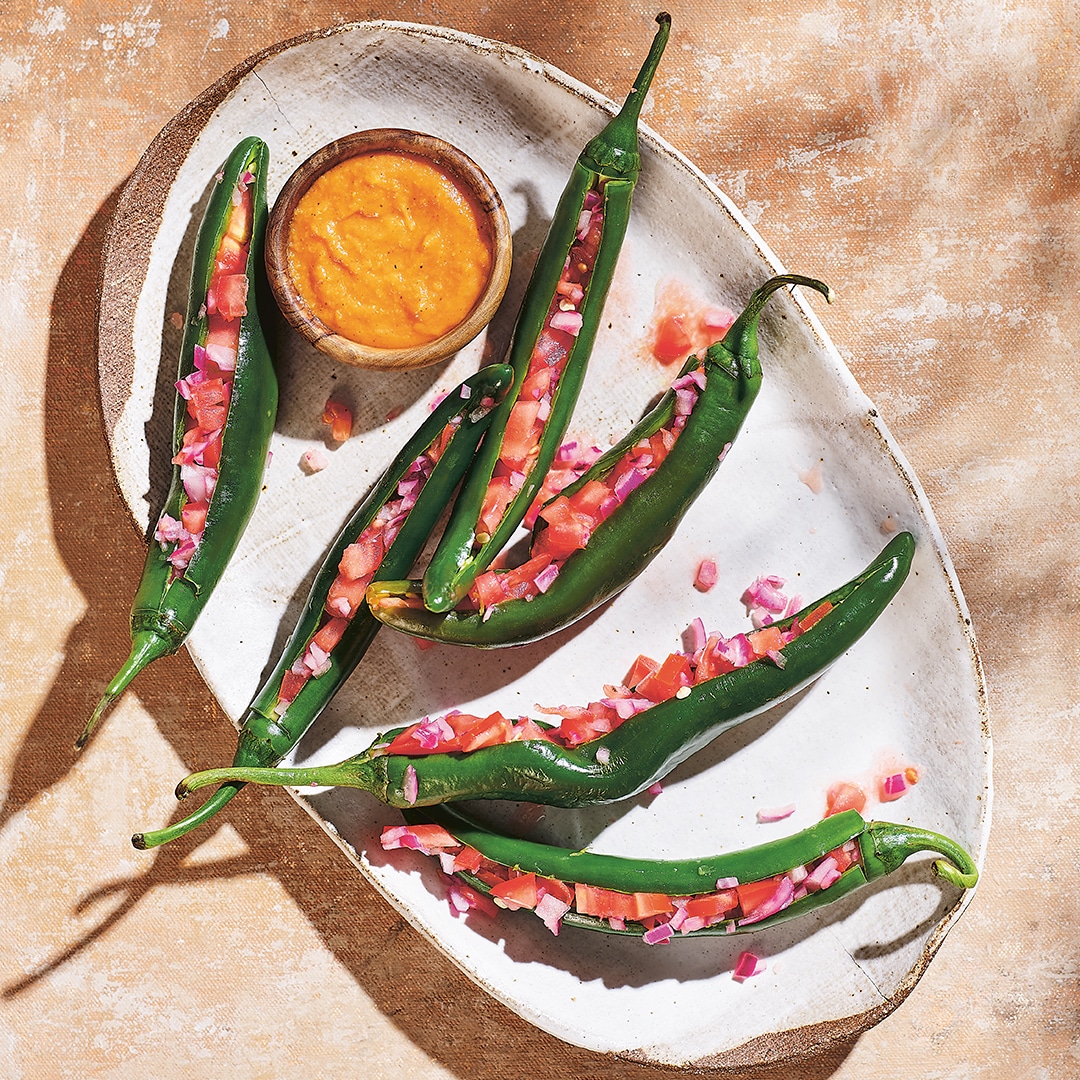
It is common for us to eat vegan foods with fresh green chilli – we take bites in between morsels. Chilli powders and pastes are generally the preferred accompaniment for meat dishes. This stuffed green chilli is an occasional one that Mum only makes when guests are coming.
Ingredients
½ red onion, finely chopped
½ tomato, finely chopped
1 tsp olive oil
1 tsp lemon juice
½ tsp salt
6 green chillies
Method
- Mix the onion, tomato, olive oil, lemon juice and salt in a bowl.
- Split the green chillies lengthways on one side, keeping the stems, and scrape out the seeds.
- Use a spoon to stuff the green chillies with the onion mixture, and close back up.
- Serve warm.
Ful (fava beans)
Serves 4
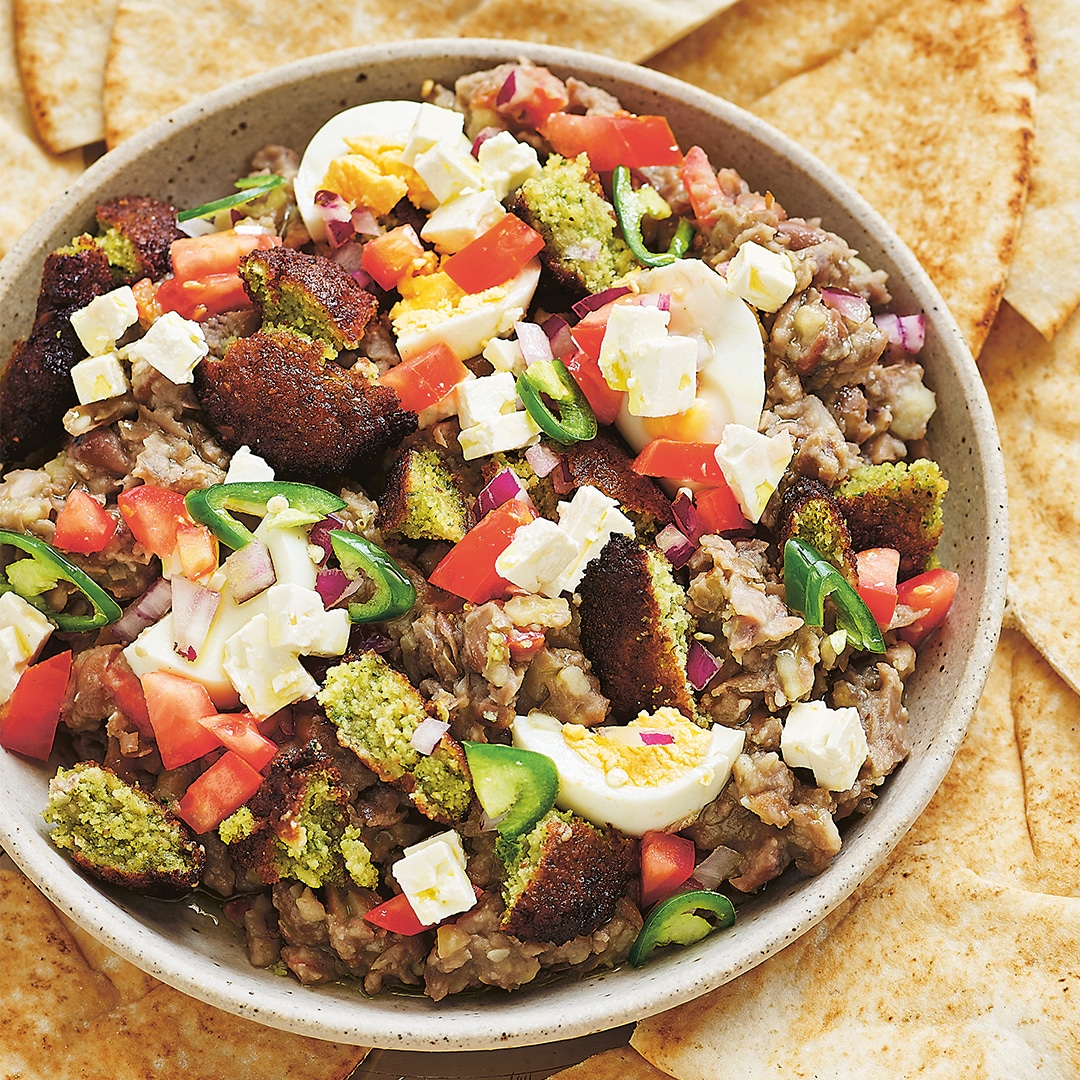
One of my father’s favourite dishes was ful – a staple breakfast in Sudan. You can buy it ready-made at local corner shops or make it from scratch. There is a basic ful, or the gourmet variety where you add Tamia, feta and even boiled eggs.
Ingredients
3 cups (500g) dried broad beans (fava beans), soaked overnight or until soft
Olive oil, for cooking and serving
1 red onion, finely chopped
1 tomato, chopped, plus extra to serve
1 tsp ground cumin
4 hardboiled eggs, peeled and chopped
1 green chilli, chopped, plus extra to serve
80g Greek-style feta, diced
Tamia falafel, to serve
Toasted flatbread, to serve
Salata aswad, to serve
Method
- Drain the water from the broad beans and put them in a large pot. Cover with water, bring to the boil and cook for 20-30 minutes.
- Drain the beans and use a potato masher to smash to a chunky consistency.
- Put some olive oil into a pan over medium heat. Add the onion and stir until well cooked.
- Add the tomato to the pan and cook for 1-2 minutes, then add the beans and stir.
- Add the cumin and season with salt, then cook for approximately 10 minutes.
- Stir the boiled eggs into the mixture, add the green chilli, then stir and turn off the heat.
- Serve in a bowl, topped with feta, pieces of tamia and extra tomato plus a drizzle of olive oil.
- Serve alongside toasted bread of your choice and a bowl of salata aswad.
Tekebash’s cauliflower
Serves 2
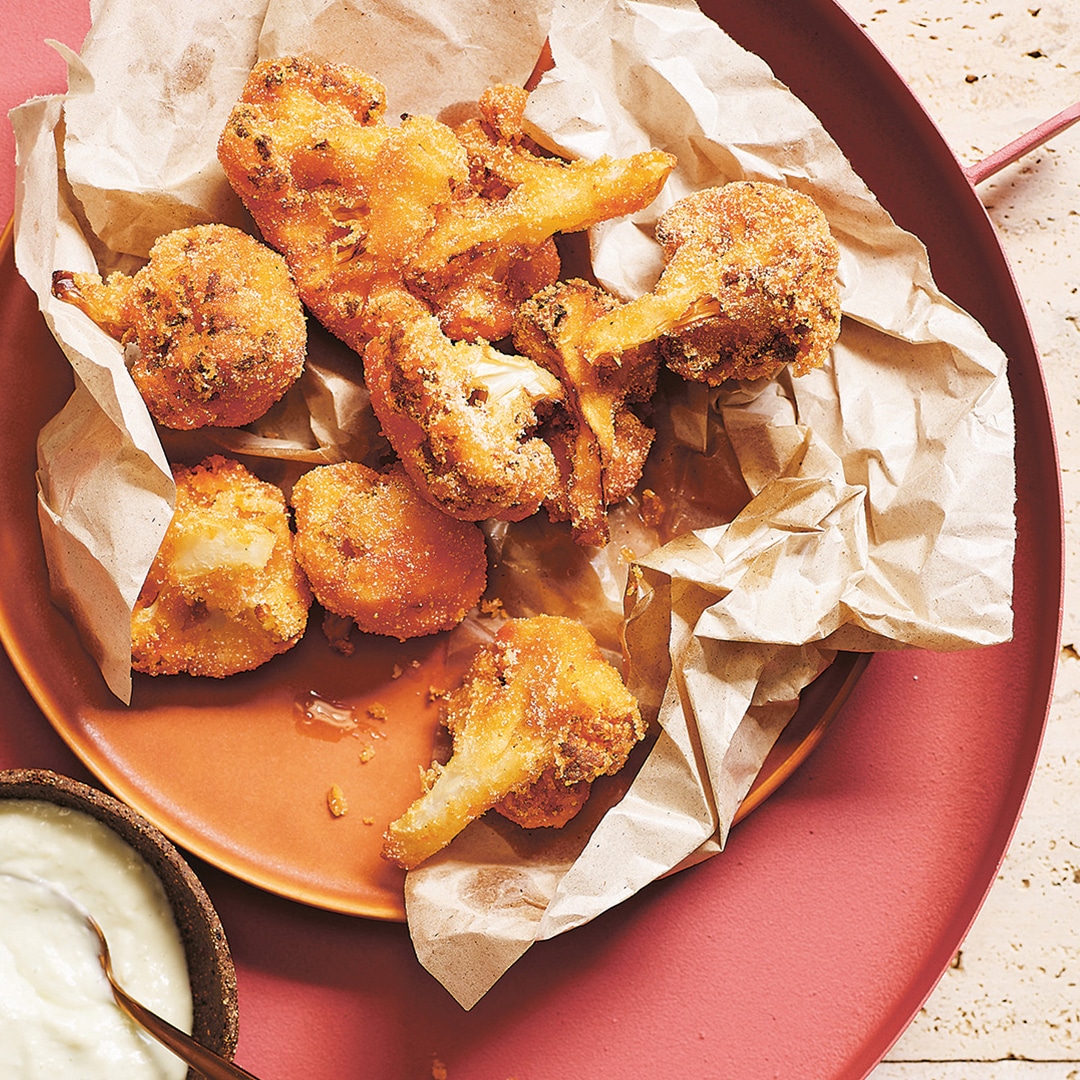
Ingredients
For the salad
1 cauliflower head
80g shiro powder
1 tsp salt
½ cup (8g) rice flour
40g teff flour, or flour of your choice
Sunflower oil, for deep-frying
For the blue cheese dip
50g blue cheese
100g mayonnaise
½ tsp minced garlic
½ tsp salt
1 Tbsp whole milk
Method
- Break the cauliflower into large florets with your fingers, then remove any large stems. Cut the florets into smaller pieces, approximately 2-3 cm (¾ -1 ¼ inch) in size.
- Mix the shiro and salt in a bowl with enough water to make a runny mixture that resembles a pulpy juice.
- Mix the rice flour and teff flour on a tray.
- For the blue cheese dip, mix all of the ingredients in a food processor and set aside.
- Dip the cauliflower florets into the shiro mixture, ensuring the entire floret is dipped. Remove and shake gently to remove excess liquid. You want it to be wet enough to hold the flour but not so wet that it turns your tray of flour into dough.
- Roll the cauliflower floret in the flour, tapping it a little to remove excess flour. Let it chill in the fridge for an hour.
- Heat enough oil for deep-frying in a wok. The oil should start to form small bubbles. Put the heat on high and then reduce to medium once the oil is ready. Fry the cauliflower until golden brown. You may need to turn it to ensure equal frying on all sides.
- Drain on paper towel to remove any excess oil, then serve with the blue cheese dip.
Words by: Sjaan Van Der Ploeg
Recipes & Styling: Saba Alemayoh
Photographs: Supplied, Courtesy Images


